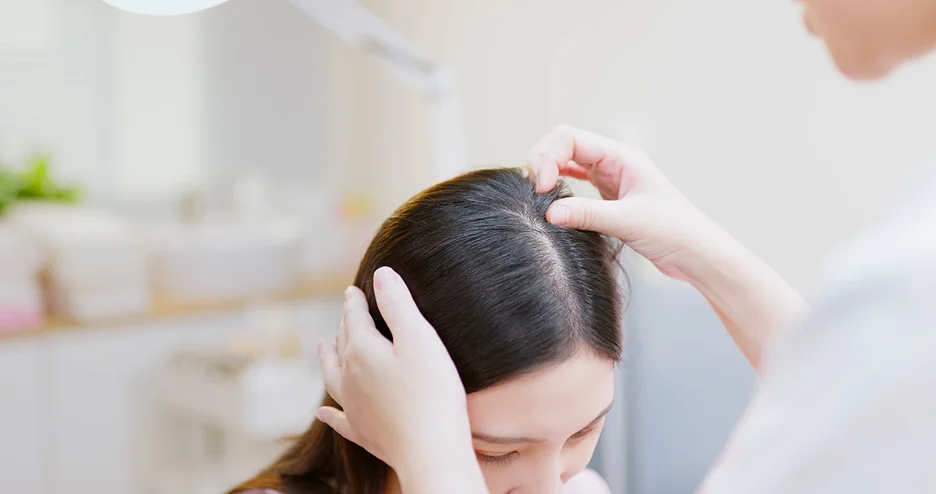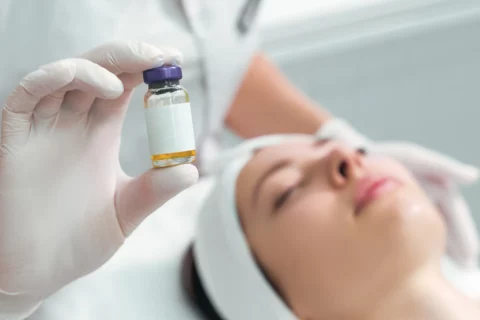Hair loss is a widespread concern, affecting millions of men and women and often impacting self-esteem. While various treatments exist, none are universally effective for everyone. A promising new approach in hair restoration is exosome therapy, which utilizes the body’s natural regenerative abilities to address thinning hair and promote regrowth.
Understanding Exosomes: Nature’s Microscopic Messengers
Exosomes are tiny, naturally occurring particles, specifically microscopic extracellular vesicles typically 30 to 150 nanometers in diameter. Derived from stem cells, these vesicles act as powerful messengers between cells in the body. They contain a rich cargo of bioactive molecules, including proteins, lipids, RNA, growth factors, and cytokines. This molecular payload allows exosomes to influence the behavior of recipient cells, playing a critical role in processes like cell communication, tissue repair, and regeneration. In hair restoration, the theory is that exosomes can signal dormant hair follicles to enter the growth phase.
How Exosomes Promote Scalp Health and Hair Regrowth

Exosome therapy for hair loss harnesses the regenerative potential of these cellular messengers to revitalize hair follicles and improve scalp conditions.
Stimulating Hair Follicles and Growth Phases When applied to the scalp, exosomes deliver growth factors and cytokines directly to hair follicles. This can reactivate dormant or miniaturized hair follicles, effectively “waking them up”.
The growth factors within exosomes, such as Vascular Endothelial Growth Factor (VEGF), Fibroblast Growth Factor (FGF), Insulin-like Growth Factor-1 (IGF-1), Platelet-Derived Growth Factor (PDGF), Epidermal Growth Factor (EGF), and Hepatocyte Growth Factor (HGF), work synergistically. They encourage follicles to enter and remain in the anagen (growth) phase of the hair cycle for longer, stimulate hair follicle proliferation, and support cell regeneration. Research suggests exosomes can activate key hair growth pathways like Wnt/β-catenin and Sonic Hedgehog (Shh).
Reducing Scalp Inflammation Chronic inflammation is a significant contributor to many hair loss conditions, including androgenetic alopecia (pattern baldness) and alopecia areata, as it can lead to hair follicle miniaturization and eventual loss. Exosomes possess notable anti-inflammatory properties. By reducing inflammation around the hair follicles, they help create a healthier and more conducive environment for follicular regeneration and hair growth.
Enhancing Blood Circulation and Nourishment Adequate blood flow is essential for delivering oxygen and nutrients to hair follicles. Exosomes, particularly through growth factors like VEGF, can help improve scalp vascularization and blood circulation. This enhanced nutrient supply helps to revive dormant follicles and supports the growth of thicker, healthier hair. Microscopic analysis has shown that exosomes can penetrate the hair bulb and dermal papilla within 4 to 6 hours of application, with nearly 80% localization by 24 hours, effectively delivering nourishment at a cellular level.
Boosting Collagen and Strengthening Hair Structure Exosomes can also stimulate collagen production in the scalp, which strengthens the hair structure and improves scalp elasticity. This contributes to more resilient hair and a healthier scalp environment overall.
The Scientific Evidence for Exosome Hair Therapy
The field of exosome therapy for hair loss is an exciting area of regenerative medicine, though clinical research is still in its early stages.
Preclinical and Early Clinical Findings Preclinical studies, conducted in labs on animal models or human cells, have shown promising results. These studies suggest that exosomes can stimulate hair growth by activating dermal papilla cells and hair follicle stem cells, encouraging follicles to stay in the growth phase longer, increasing hair follicle size, and improving blood circulation. They also appear to protect against DHT, a hormone linked to hair loss.
Some human clinical studies have also yielded encouraging data:
- A 2020 randomized controlled trial involving 58 patients with androgenetic alopecia found that 78% of participants receiving exosome treatment showed improvement in hair density, compared to 27% in the control group. Additionally, hair shaft diameter increased by 31.6% in the exosome group versus 7.8% in the control group, with high patient satisfaction scores (8.3/10).
- A 2022 study in South Korea reported that 39 patients with androgenetic alopecia saw improvements in hair density and thickness after 12 weeks of adipose-derived stem cell (ADSC)-exosome therapy.
- A U.S. case series noted noticeable hair growth in 50% of women and 80% of men after six months of exosome injections.
- A trial at Yale University found that exosome therapy enhanced hair follicle growth factors, leading to thicker and healthier hair regrowth.
- A 2025 case report detailed successful treatment of alopecia areata triggered by psychological stress using rose stem cell-derived exosomes, with complete regrowth and natural pigmentation achieved by six months.
Current Research Landscape and Limitations Despite these positive early findings, the overall body of clinical evidence is still limited. A 2024 systematic review identified only nine relevant clinical studies for alopecia, involving approximately 125 patients, with most being small, uncontrolled trials. As of early 2024, there are no US Food and Drug Administration (FDA) approved exosome products for hair loss or other indications.
Experts emphasize the need for larger, well-designed, placebo-controlled clinical trials with extended follow-up periods to definitively prove efficacy and long-term safety. Consistent manufacturing standards and regulatory oversight are also crucial for ensuring product safety and quality.
The Exosome Hair Treatment Journey

Exosome therapy for hair loss aims to deliver these regenerative signals directly to the scalp to stimulate follicles, halt hair loss, and promote new growth. The treatment typically involves the following steps:
1. Consultation and Scalp Assessment The process begins with a consultation to determine the extent and type of hair loss and to assess suitability for exosome therapy. This treatment is generally best for individuals with mild to moderate hair loss rather than complete baldness.
2. Treatment Application Exosome therapy is available in two main forms:
- Injectable Exosome Therapy: Similar to platelet-rich plasma (PRP) therapy, this involves injecting an exosome solution into the targeted areas of the scalp using a fine needle. A local anesthetic may be applied beforehand to minimize discomfort. Some clinics combine exosome injections with microneedling or low-level laser therapy (LLLT) to enhance scalp stimulation and exosome absorption. Microneedling creates micro-channels in the skin, which helps the exosomes penetrate more deeply and effectively.
- Topical Exosome Serums: These are a less invasive option. They are often applied to the scalp after procedures like microneedling, which helps the exosomes penetrate deeper into the scalp. While potentially less potent than injections, topical forms can be useful for maintenance.
3. Post-Treatment Care After the procedure, patients are usually advised to avoid excessive heat, strenuous activity, and harsh hair products for a few days. There is generally little to no downtime associated with exosome therapy.
4. Treatment Frequency Multiple sessions may be needed to achieve optimal results, and maintenance treatments are often recommended every 6 to 12 months, depending on the individual’s response and the severity of hair loss.
Expected Results and Timeline
While individual results can vary based on the severity of hair loss and follicle responsiveness, a general timeline for improvements might be observed:
- Weeks 1-4 (or Months 1-2): Initial changes may include reduced hair shedding and improved scalp health. Visible regrowth is usually minimal at this stage.
- Months 2-3 (or Months 3-6): Hair texture may begin to improve, and early signs of new hair growth might become noticeable. Thickening of existing hair can occur.
- Months 4-6 (or Months 6-12): More significant thickening of hair, improved volume, and new hair strands become more visible. This period often shows substantial improvements in hair density and scalp coverage.
- Months 6-12: Full results are typically achieved, with enhanced hair density, strength, and overall scalp coverage.
Patients have reported substantial improvements in hair thickness and density, with some noticing positive changes within weeks.
Key Benefits of Exosome Hair Restoration
Exosome therapy offers several potential advantages for individuals experiencing hair loss:
- Reactivates Dormant Hair Follicles: Growth factors can stimulate inactive follicles and potentially reverse miniaturization.
- Reduces Scalp Inflammation: Anti-inflammatory properties create a healthier scalp environment.
- Enhances Scalp Circulation: Improved blood flow delivers more nutrients to follicles.
- Stimulates Natural Hair Growth: It encourages new hair growth and can improve hair thickness and density.
- Minimally Invasive: Compared to surgical options like hair transplants, exosome therapy is minimally invasive with little to no downtime.
- Addresses Various Hair Loss Types: It shows promise for androgenetic alopecia (male and female pattern baldness), telogen effluvium, and alopecia areata.
- Potentially Quicker Results: Some reports suggest quicker and more effective outcomes compared to older therapies like PRP, likening exosomes to “PRP on steroids”.
- Natural-Looking Results: The therapy aims to restore hair by leveraging the body’s own regenerative mechanisms.
Safety and Future Directions

Exosome therapy for hair loss is generally considered safe, with side effects being rare in the reported clinical studies specific to alopecia. The exosomes used are typically sourced from stem cells or hair follicles and are processed to be readily available for topical or injectable use without the need for blood draws from the patient, reducing the risk of certain reactions.
However, it’s important to note that exosome therapy is still an emerging field. While no significant adverse reactions associated with exosome treatment for hair loss have been widely reported, the broader field of dermatology has seen at least 10 serious adverse events with exosome use for other applications. As of early 2024, there are no FDA-approved exosome products, highlighting the need for caution and further research. The main considerations for broader clinical adoption include standardization of exosome purification, isolation, storage, and ensuring scalability and reproducibility.
The future of exosomes in hair restoration looks promising, with ongoing research aimed at further deciphering their mechanisms of action, optimizing delivery methods, and establishing definitive efficacy and long-term safety profiles through robust clinical trials. This innovative approach has the potential to significantly advance the treatment landscape for various types of hair loss.






